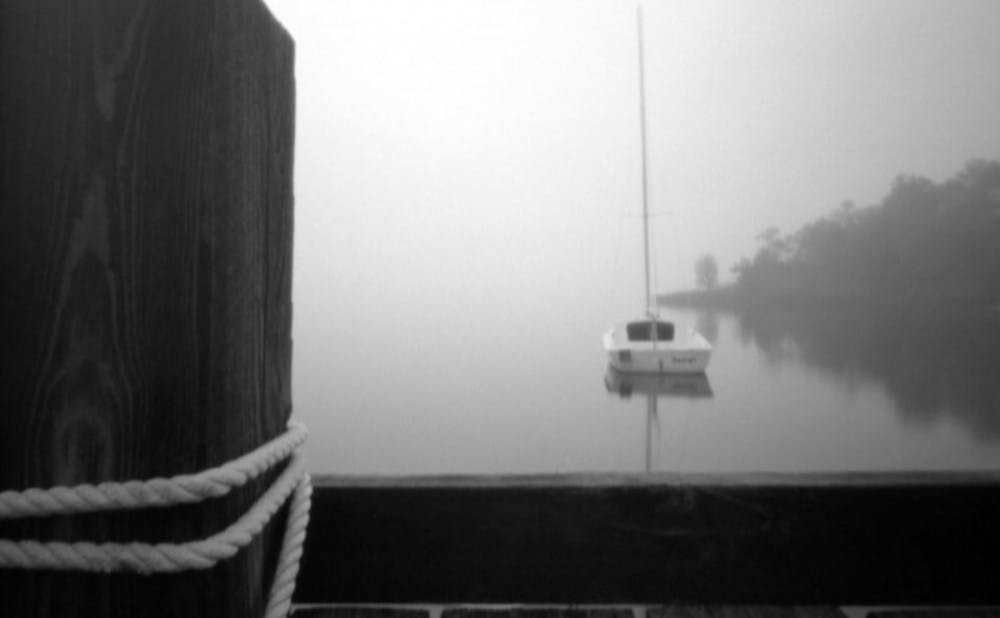In the era of digital cameras, it is very easy to forget what photography looked like before lenses were even invented. Pinhole photography is a great example of how a seemingly forgotten art movement can regain its strength and, once again, come into the lives of hundreds of people.
When people realize that there are no buttons, flashing lights or displays to take away their attention, photography becomes a form of art rather than a boring chore. This is why in the art world, pinhole photography is becoming a new trend, and one that Duke students should be aware of.
A new pinhole photography show, titled as “Long Exposure,” will run from April 12 through April 29 at The Carrack, a community art space based in Durham. The show will combine an exhibit of pinhole photographer Gregg Kemp’s work with work from collaborative workshops, where visitors will have the opportunity to create their own cameras, take photographs of downtown Durham and then use a darkroom to develop the pictures they took.
“Long Exposure” would not exist without the efforts of photography teacher Jon Twietmeyer and writer and curator Chris Vitiello. On a Sunday morning, I had the chance to talk to Vitiello himself and ask him about his passion for pinhole photography and what led him to create the show.
“I remember the magic of the first moment when I put a sheet of photo paper into a developer and had an image appear out of nothing,” Vitiello said. “I think at that moment, everyone falls in love with this kind of photography.”
Vitiello and Twietmeyer created their show so that other people, too, could experience the magic of seeing their photographs come to life. Some people have never taken an analog photograph in their whole life, and for them, pinhole photography has become a great way to go back to the origin of the medium and get a real sense of it.
“I’ve always done pinhole photography,” Vitiello said. “You really just need a box, a pinhole, photo paper and some chemicals. Everywhere I’ve lived, over my whole life, I’ve always set up a darkroom in my bathroom, put trays of developer in the bathtub and made photos.”
Pinhole cameras can be made out of anything — wood and metal, cereal boxes and cookie containers, even seashells. Back when I lived in Russia, I remember seeing a blurry photo of my not-yet-hairless dad inside one of these such handmade seashell cameras, and ever since I have always dreamt of practicing this magical type of photography myself.
Luckily, fate led me to Durham — home to Gregg Kemp, a visual artist whose photographs are focused on long exposures of pinhole photographs of nature and nightlife.
“Durham shaped Gregg’s work dramatically,” Vitiello said. “He took a lot of photographs around town and around his house and there was a real community of other photographers in the area that were using analog processes and supporting each other.”
Vitiello also mentioned that living in North Carolina gave Kemp access to a variety of different geographies such as foggy mountains, deserted beaches and misty forests. Pinhole’s infinite depth of field gave Kemp’s photographs a sense of mystery while placing every little detail of the natural world into focus and eliminating the boundaries between fantasy and reality.
Vitiello and Gregg are not the only ones who fell in love with the magical realism of pinhole photography. Third-year Henry Yu, the co-founder of the Duke Photography Club, also could not stop smiling when he described his experience with the art of long exposure.
“Once, I went to the Duke Gardens to practice some night photography,” Yu said. “It was a truly spiritual experience. It was so quiet and dark, and I spent hours taking pictures all by myself, breathing in the moonlight and all the surroundings.”
Yu explained that in pinhole photographs, the image always has a very foggy, soft effect. This happens because all the motion in the pictures has been blurred out – the absence of a lens makes the camera take its time to soak in the light and literally translate the image onto the photo paper.
“Pinhole gives your pictures have a poetic feeling,” Yu said. “You can create a myriad of very interesting effects by simply moving the camera or not moving it at all. In a water shot, for example, a still camera captures the essence of the lake, and not the waves’ movements, and it creates a feeling of being in a paradise.”
Yu is genuinely excited about a pinhole photography show finally taking place in Durham, especially, because the city has so much scenery to offer – scenery which is often underappreciated.
“Pinhole photography is an art that can depict urban surroundings in a new, previously unknown light,” Yu said. “I’m beyond excited to see what ‘Long Exposure’ has to offer and how many amazing photographs I can take with a camera literally made from a box!”
“Long Exposure” pinhole photography show will take place from April 12 until April 29 at The Carrack. The pinhole workshops will be hold on April 14, 15, 21, 22, 28 and 29 at 1 p.m.
Get The Chronicle straight to your inbox
Sign up for our weekly newsletter. Cancel at any time.

